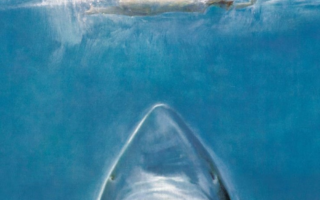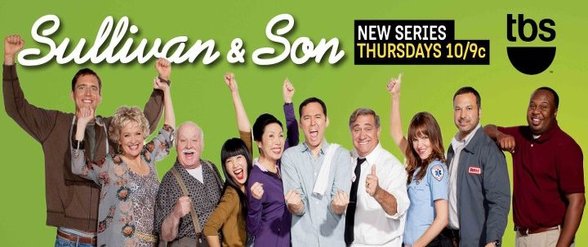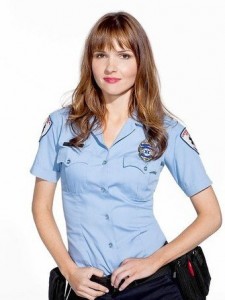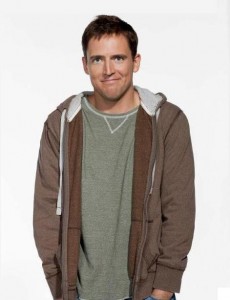Tom Sullivan is the man responsible for the props and special effects for “The Evil Dead”. He also worked the stop motion animation work in “Evil Dead 2”. Media Mikes had a chance to chat with Tom about his work on the series and about his influences growing up.
Mike Gencarelli: Were you a fan of Ray Harryhausen and has he inspired your work?
Tom Sullivan: It all started for me…art, film…when I saw the original “King Kong” when I wa five years old. I thought if there were jobs that were this cool…(laughs) I hadn’t heard of Ray Harryhausen yet, or Willis O’Brien. I didn’t even know how they did the gorilla in the movie. My five year old thinking was that they had a lot of really strong gymnasts, really athletic people. But I knew it wasn’t a real animal. I had no clue about stop motion. And it wasn’t until the 3rd grade that Famous Monsters of Filmland came to my attention. It had stories about “King Kong” and Ray Harryhausen. Then I started seeing movies like “The Seven Voyages of Sinbad” and “Jason and the Argonauts.” And I thought, “oh, somebody carried this on. Somebody took the stop motion banner forward.” And Ray did that exceptionally. He was making the most remarkable special effects films over all of that time. Next to him were the occasional big studios films and then the George Pal films. Pretty much everybody else’s films were pretty lame. There was a filmmaker from Eastern Europe named Karel Zeeman, who was like the Willis O’Brien of, I think, Czechoslovakia. He did these most imaginative films that were just beautiful. Films like “The Fabulous World of Jules Verne” and “Journey to the Beginning of Time,” which was about some kids taking a boat down a river. They start in almost an ice age, a glacier and the farther they go down the river the farther back in time they go. He filled the film with herds of dinosaurs and mammals and things like that. Eventually they hit the ocean. It’s a really creative film…lots and lots of mattes and stop motion. You can find them on DVD. “The Fabulous World of Jules Verne” is neat because the sets are a series of engraved drawings. You can see the lines drawn on it and it has this really charming take on it…the Victorian charm of manners and other things. But anyway I found those guys and just took off. Ray’s stuff was highly influential to me. I’d love to see that stuff come back. In reality, stop motion never died. It just took on new forms. Like the stop motion puppet films that Tim Burton produces. I think the new “Addams Family” film will be stop motion. Puppet films are doing great…they make money. But I’d like to see stop motion come back. Maybe pair it up with digital compositing. Digital compositing is the best thing out there. A lot of films have them. People driving around in cars or on trains, there’s a view out of a window. A lot of that is done with green screen because you can control things a lot better. Done correctly, with the time and talent and money, it’s nearly impossible to tell. Look at a Ray Harryhausen film. That’s one guy putting out five monsters for a movie. For the new “Clash of the Titans” film the credits went on for eight minutes because they had armies, literally hundreds of people doing that stuff. Each figure had to be constructed. Not just the sculpture but the muscles, textures, hair if it has it. They all have to be incorporated and animated in layers. You start with a guy with a stick figure animating that, and then someone adding on the layers of muscle and skin and clothing and hair and then you have the textures…lighting textures and skin textures. It really takes about 15 layers to do that. And with the video-assist in stop motion today you can actually see the stop motion growing as it progresses. Ray Harryhausen has turned out to be incredibly influential. Did you see the film “Monsters?” That’s a Harryhausen film. “Lord of the Rings?” That’s a Harryhausen film. “Cloverfield?” That’s a Harryhausen film. Just with some tweaks on it. “Godzilla” is a Ray Harryhausen film. The filmmakers wanted to match the success of “The Beast From 20,000 Fathoms.” That was the first one! Even though “King Kong” featured it, Ray Harryhausen made if a part of the landscape. The big monster on the loose thing. He did a couple of those. And he wrote some books for us film scholars…he spread the information he had gleaned.
MG: What was your inspiration for some of the props and special effects for “The Evil Dead”?
TS: Probably the Book of the Dead. In the script it was described as having an animal skin cover, which I took for leather. It was also described as having two letters from an ancient alphabet. To me I thought, no matter how scary I make those letters, it’s going to come off as a scrapbook. To me, as an illustrator, and I’m an artist first, you try to make something breathe. In that split second that it takes to identify what something is, at the moment your brain is processing it, you’ve got to make it simple so that all of the clues point to exactly what it is. And letters on a leather book they’re not…they’re not words. Like “TO SERVE MAN.” They’re not recognizable. They’re just symbols. And that really doesn’t speak much to me. If it’s a book of awful things, you should be able to just look at it and know you’re not going to pick it up…it’s too disgusting. My dad used to get SAGA and other men’s magazines that used to have all kinds of rancid stories in them. I’d sneak them from him. And one of them had a story about Ilse Koch, who was the wife of a concentration camp commandant. She was tried later in the Nuremberg Trials and executed, thankfully. But she would skin the prisoners and use the skins for curtains and lampshades and book covers. Needing to not just put somebody’s back on the book cover but a recognizable human feature, the story goes I didn’t want to put a schlong on the cover (laughs) so a human face seemed good. I’ve been looking and I’ve never found a book with a face as the cover. I’ve never seen any of Ilse’s books so I don’t know what she used. I’m not sure she used a face so I think we made that up. I did a slush mold of Hal Delrich’s face. I stretched it over some corrugated cardboard and instant book cover. I also got some store bought parchment…thick dyed paper…and I bound that together with grocery bag material. That became the book binding. I glued that in. Then for the next two weeks of filming, when I had finished up my other chores and done make up for people I’d sit around the kitchen table down in Tennessee and talk with Josh Becker, who was second unit camera. He helped with sound and lots of things. He’s really a film scholar and a film director now. We would talk about film and I would illustrate the book. I based the design on Leonardo da Vinci’s notebooks. It had some cool drawings and he would have his mirrored…reversed…lettering. He could right backwards so that you could only read it in a mirror. I should say here that the “Evil Dead” book does NOT contain any hidden messages. I call it sanscript or the font of the dead. The hidden messages didn’t come in until the Anchor Bay books, and that was a lot of fun. I designed them and illustrated them. And the eyes still scream on the “Evil Dead 2” book.
MG: You did more stop motion animation work in “Evil Dead 2.” Tell us about that process?
TS: “Evil Dead 2” was a much bigger film. The first was a little tiny thing. But the second one had like a $3 million budget and three stop motion crews. Sam actually gave me my choice of what I wanted to do. I thought stop motion was going to be the next big thing, not predicting digital at all. At the end of “Evil Dead 2” there’s a scene where this flying Deadite comes in and battles the soldiers on horseback and knocks them off. He then kills a couple of them. And the woman running with the child and it swoops down on her and then Ash shows up. The problem was I had prepared a list of dos and don’ts to shoot the background plates. My cameraman for the finale, Larry Larson, who had a lot of experience in this stuff, he and I put together a little list. I’m not sure what happened. Some of the things were “don’t put dust in the air” or “don’t kick smoke up, or as little as possible.” Because if you use that as the screen you project the image on to behind the puppet it would put the creature not on the plain behind the dust but in front of the dust, which would make it look smaller perspectively. But Sam wanted dust and he got these huge aircraft engines and ruined it! So there were just one or two shots that we could actually use for backgrounds. That was the reason I did the film and it goes by so fast people don’t even remember they saw it. I built, designed and animated the model. I even put little screws in the back attached to wires so I could animate various expressions. I didn’t get to use it because the whole sequence was truncated. But if you look closely in one of the profile shots when the Deadite is flying, in between one of the wing flaps you can see the face smile. On “Mighty Joe Young” Ray used to put clay over the lips to animate the lips moving…beautifully too. It was astounding how he did that.
MG: Would you say that “Army of Darkness” was the most difficult film to work on due to the large scale?
TS: Actually on “Army of Darkness” all they needed was an “Evil Dead 2” Book of the Dead. They had apparently lost the books, they never returned from “Evil Dead 2.” So I sent them one and a couple of months later I had to call and ask “where’s my money.” (laughs) The art director reminded them that Ash had to get sucked into a Book of the Dead and it had to be bigger than the “Evil Dead 2” book. So their art director just did a derivative copy of it. I hate the cover. But they needed a bigger book so that Ash could get sucked into it and then crawl out. But that’s the only film I actually got credit for the Book of the Dead on. They were kind of stingy on credits for “Evil Dead” and “Evil Dead 2”, which is too bad because I could have used a career! (laughs)
MG: Tell us about your website, http://DARKAGEPRODUCTIONS.COM/?
TS: We don’t have a catalog yet. I’ve been an illustrator and have illustrated H.P. Lovecraft role-playing games for the past 18 years. I’ve got a terrific printer that prints archival paper with archival ink. Really beautiful, archival, will last hundreds of years prints. I make convention appearances and I take along some racks and lots of prints and props that I show off. I have fun meeting the fans. That’s the greatest reward out of all of this. Seeing the influence that films have on people…I never expected that. I mean I saw “King Kong” and wanted to make movies. And a convention doesn’t go by where I don’t meet someone who says “you know, I’m an artist because I saw your work.” Or a filmmaker or special effects guy. That’s really cool…really cool.
A Media Mikes exclusive:
Following the interview Mr. Sullivan said he had a little news that we could break for him:
Ryan Meade, a friend of Mr. Sullivan and a filmmaker, is finishing up a documentary film about Mr. Sullivan called “Invaluable.” The title comes from the word Fangoria Magazine has used to describe Mr. Sullivan’s involvement in the “Evil Dead” films. The film covers Mr. Sullivan’s art and film career and includes interviews with some of films biggest stars, including, of course, the cast and crew of the “Evil Dead” films. The film will also feature a lot of behind the scenes looks at the “Evil Dead” films.









